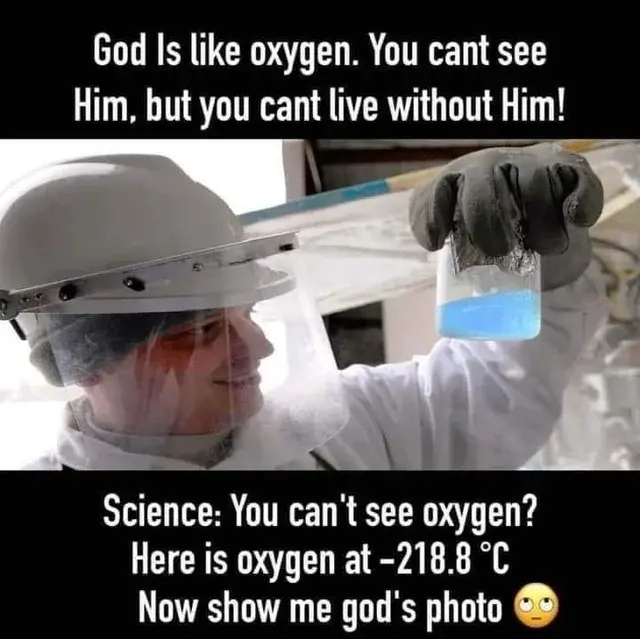you are viewing a single comment's thread
view the rest of the comments
view the rest of the comments
this post was submitted on 01 Dec 2023
1026 points (100.0% liked)
Atheist Memes
6837 readers
256 users here now
About
A community for the most based memes from atheists, agnostics, antitheists, and skeptics.
Rules
-
No Pro-Religious or Anti-Atheist Content.
-
No Unrelated Content. All posts must be memes related to the topic of atheism and/or religion.
-
No bigotry.
-
Attack ideas not people.
-
Spammers and trolls will be instantly banned no exceptions.
-
No False Reporting
-
NSFW posts must be marked as such.
Resources
International Suicide Hotlines
Non Religious Organizations
Freedom From Religion Foundation
Ex-theist Communities
Other Similar Communities
!religiouscringe@midwest.social
founded 2 years ago
MODERATORS

That is funny. According to you, for a medium to be called "fully transparent" there has to be no scattering of light. By that definition, water and air are not "fully transparent". I'm not sure if such a material exists that doesn't scatter any amount of light.
Correct. The only substance I can imagine being completely transparent would be some kind of dark matter. Everything else still interacts with light, no matter how little. Even deep space isn't completely transparent, as we can tell what elements exists as interstellar and intergalactic dust from spectrographs.
Atmospheric absorption spectrum - We can see (heh) that the atmosphere is completely opaque to most electromagnetic radiation before scattering. Only some microwaves and short radio waves can pass without any absorption.
Atmospheric transmission spectrum - We can see that not even 60% of visible light is transmitted to the surface directly due primarily to scattering losses. That scattered light is why our sky is blue during the day and orange at sunset/sunrise. Mars' atmosphere is orange during the day and blue at sunset/sunrise for the same reason.
The physics of light scattering doesn't change based on how much atmosphere you have, even a single particle can scatter light. In fact, the physics of scattering is based on single particles, and the particle size is what differentiates Rayleigh scattering from Mie scattering. Other interactions with the incident particle can cause Raman and Compton scattering too. None of these need multiple particles.
That seems to be the scientific consensus, yes. It's like friction, no material is truly frictionless just like no material is truly completely transparent. The ocean gets real dark once you get deep enough which does seem to suggest that water is not fully transparent.